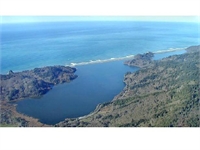
Fishing, Hiking, and Boating in Humboldt Lagoons State Park
Important Notice: Our web hosting provider recently started charging us for additional visits, which was unexpected. In response, we're seeking donations. Depending on the situation, we may explore different monetization options for our Community and Expert Contributors. It's crucial to provide more returns for their expertise and offer more Expert Validated Answers or AI Validated Answers. Learn more about our hosting issue here.

Fishing, Hiking, and Boating in Humboldt Lagoons State Park
You must be logged in to post a comment.
If you read the title, then you already know what to do when you reach the lagoons of Humboldt County. Need I elaborate? Well, Experts123.com appreciates articles more than a dozen words in length, so maybe I should.
Dry Lagoon
Four lagoons constitute Humboldt Lagoons State Park; one of these is Dry Lagoon, situated between Big and Stone lagoons and, as the name implies, it’s not one of the best locations for fishing or boating, though it lays right on the coast, is festooned with countless driftwood logs and does make for a nice hike, as long as you don’t mind getting sand in your shoes. Personally, I hate that, so that’s all I have to say about that one.
Big Lagoon
The names of each lagoon are a bit obvious and point out the most prominent feature of each, and Big Lagoon—the largest of the four—is no exception. This brackish water lagoon opens to the Pacific regularly, usually a couple times a year when heavy rains coincide with high tides and strong westerly winds. Situated just north of the town of the same name and only minutes away from Trinidad, much of Big Lagoon is home to those fish that can tolerate brackish water, including steelhead trout, salmon, halibut, rumored catfish (though I never witnessed one myself) and sturgeon, some of which can grow to 100 pounds or more. Where Maple Creek becomes a marsh that joins with the lagoon, anglers can find rainbow and cutthroat trout, but they are nearly impossible to catch unless you have a boat. If you know where to go, you can even dig freshwater clams when they are in season.
Stone Lagoon
A mile and a half north of Big Lagoon lies Stone Lagoon. I’m not sure why it was named that; there are some stones around the shore, sure, but not noticeably more than are around Big Lagoon. This semi-brackish lagoon opens to the ocean less frequently than Big Lagoon, not necessarily yearly even, and as a whole it is more hospitable to freshwater fish like rainbow and cutthroat trout, though I never caught even one of either in this lagoon. Like Big Lagoon, Stone Lagoon is popular with kayakers and canoers (motorized boats are forbidden on all of the lagoons); some people fish from their tiny boats, but most just enjoy a good paddling… so to speak.
All three wet lagoons have somewhat straight, sandy stretches separating them from the ocean to the west and have tree-festooned hills ringing their east sides. There are trails that circumnavigate Stone Lagoon and roads that go around Freshwater Lagoon, but the marsh prevents circular travel on foot around Big Lagoon where Maple Creek enters.
Freshwater Lagoon
The smallest of the wet lagoons is also my favorite: Freshwater Lagoon hardly ever opens to the ocean, and can only do so through a culvert running beneath the Redwood Highway, which separates the lagoon from the beach. Less popular with kayakers, most of the boats that go onto this lagoon carry fishermen dead set on catching some of the many smallmouth bass in the tarn. I always went for the rainbow trout, myself, and rarely went home with less than one two-pounder. And while waiting for the fish to bite, I spent my time taking in the beautiful views and watching the ospreys plunge into the water for fish of their own.
This is the only one of the lagoons that has privately-owned lots—most with houses—overlooking its east shore, as the state park only extends north along the beach here and does not actually include the lagoon. A hunting club occupies part of the southeast shore of the lagoon, so be careful where you fish, because those hunters are more concerned about the position of ducks and geese than they are about people. Because of all this, Freshwater Lagoon is not an ideal hiking destination, though it is the most popular of the lagoons among anglers.